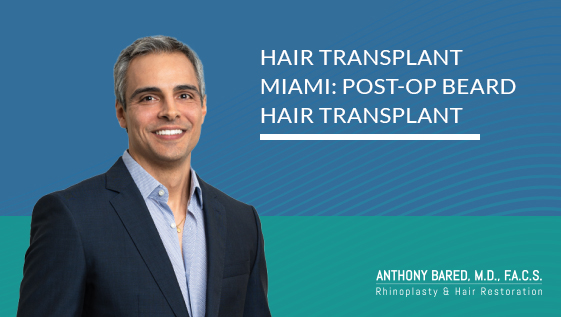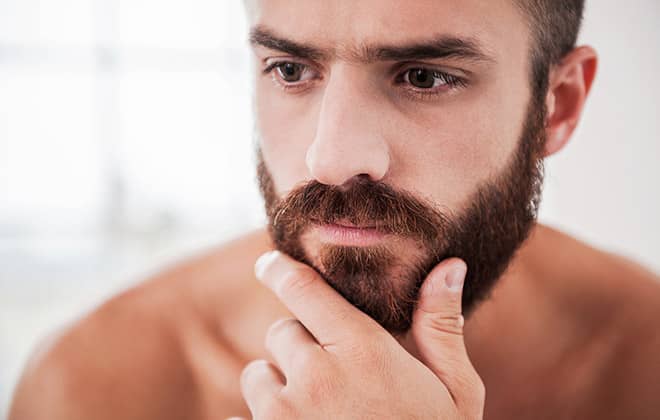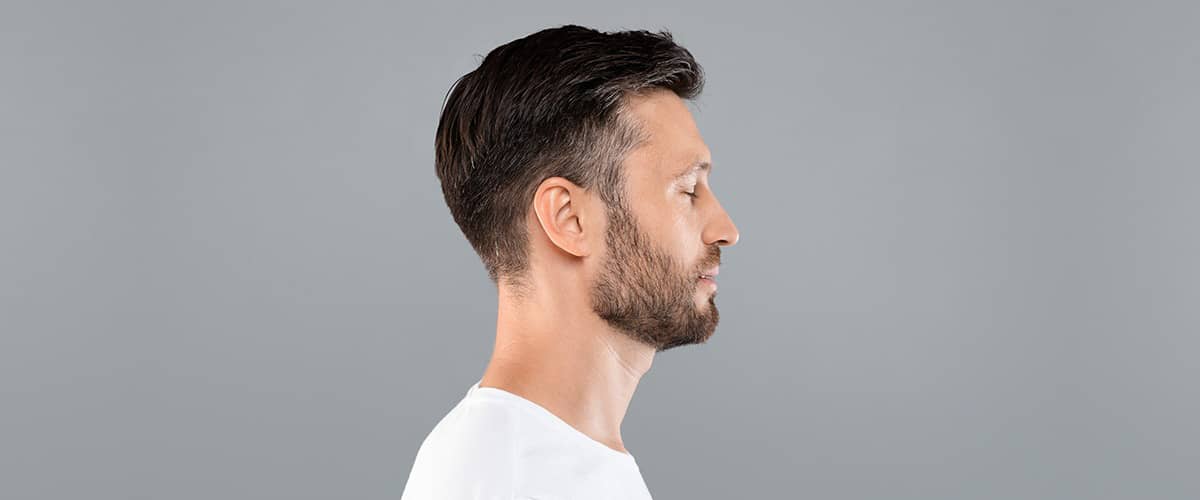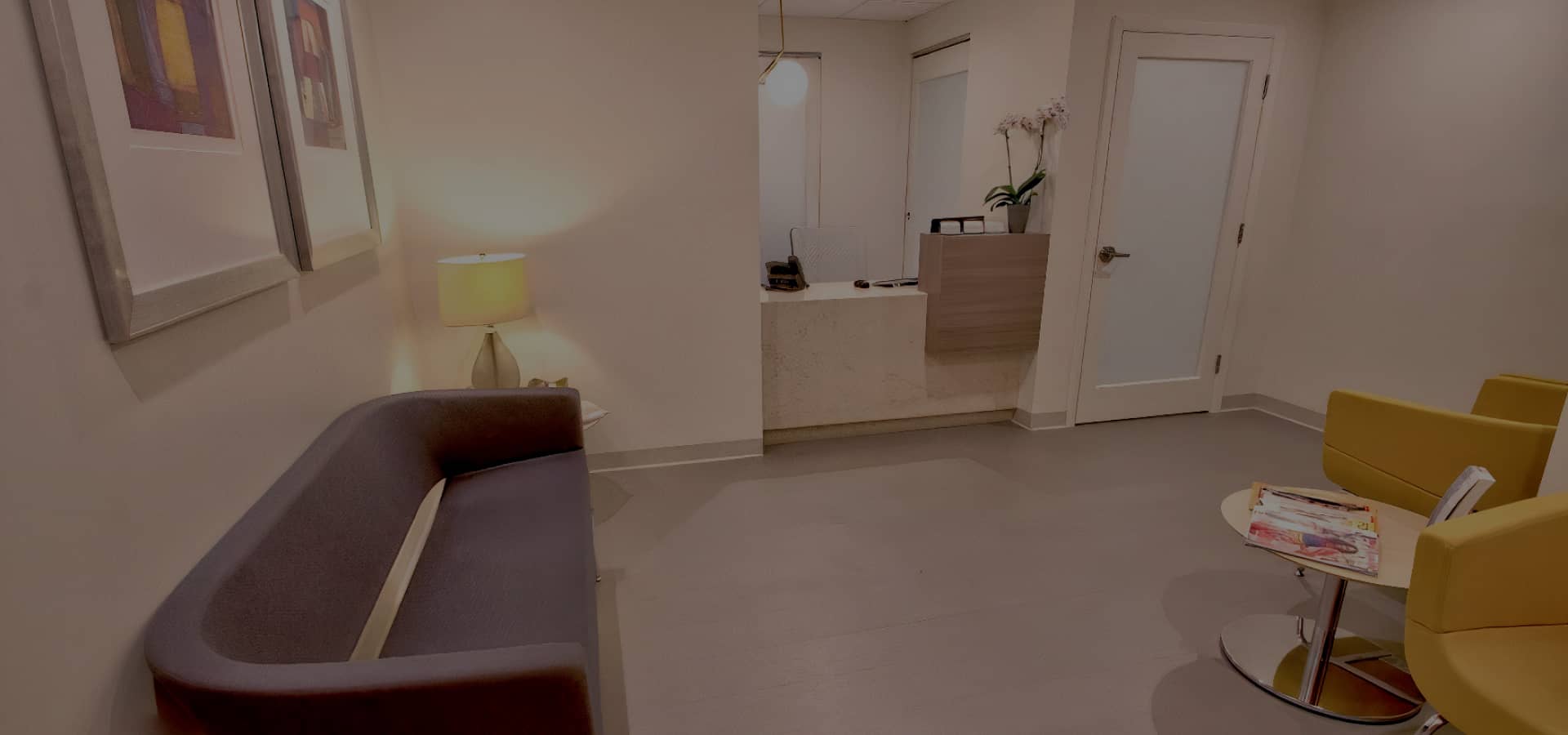Why do some men have full, thick beards and others don’t? It mostly has to do with genes, hormones, ethnicity, and age. Just as some men go bald because of their family history, some can grow full beards for the same reason.
If you’ve been trying to grow a beard for some time and haven’t been able to or haven’t achieved the growth pattern you want, you’re not necessarily out of luck. A beard transplant might be an option for you.
During a beard transplant, a hair restoration surgeon will harvest hair from one area of your body and transplant it to your face. If you’re considering cosmetic surgery, here’s everything you need to know about beard transplant expectations, before, during, and after your beard transplant.
A Beard Growth Primer
First, let’s take a look at the basics of beard growth. Everyone, both women and men, have facial hair. But men tend to have thicker, longer, and more visible hair on their faces than women.
A primary reason why some men have darker, thicker beard hair is testosterone. When men are still boys, they start going through puberty. Their bodies begin to produce more testosterone, which stimulates the hair follicles on the face.
Facial hair growth is often one of the last stages of puberty for boys, meaning they are likely to see other changes, such as a deepening voice, before they start to notice hair growth.
When facial hair starts growing varies from boy to boy. Some boys start to have little mustaches at the age of 12 or 13 while others might not see any hair growth until they are nearly finished with high school, or even later.
A guy’s genes influence several things about his facial hair:
- Color
- Amount
- Pattern
Facial hair can be light or dark. Some people have light blond beards and mustaches, while others have dark facial hair.
The color of the facial hair doesn’t always match the color of the hair on a guy’s head, either. Some men have very dark beards but lighter hair or the reverse.
How much facial hair a guy ends up with is also influenced by his genes. Some men just don’t have a lot of individual hair follicles on their face, meaning they can only grow patchy beards with stray hairs or can only grow facial hair in some areas of the face, such as on the upper lip.
Just because many guys start to grow facial hair in their teens doesn’t mean the beard pattern they have at 16 or 18 will be the same pattern they have at 25 or 30. According to WebMD, many men continue to develop facial hair or the hair pattern continues to fill in throughout their 20s. Usually, by the age of 30, the beard volume and pattern a guy has is what he will have for life.
Why Have a Beard Transplant?
If you want to grow a beard or other type of facial hair and have had trouble doing so naturally, a beard transplant can help you get the facial hair pattern you want.
Beard hair transplants can be ideal for men with limited facial hair growth due to their genes or ethnicity. The surgery can also help transgender men get the beard growth they want.
Since Facial Hair Transplant is surgical and requires a fair amount of preparation and post-operative care, you might wonder if it’s the best option for you.
Unfortunately, while there are medications that can help scalp hair grow thicker and fuller, such as minoxidil, there aren’t effective medications for beard growth. Minoxidil isn’t approved for use on the face and is likely to have limited effectiveness.
Plus, if you decide to take medicines to improve your beard growth, you’ll only see improvements while you continue to take the medicine. Once you stop, your beard pattern will return to the way it was before.
A beard transplant, on the other hand, provides permanent results. The transplanted follicles will continue to function, letting you grow your facial hair how you want for as long as you want.
How to Decide if a Beard Transplant Is Right for You
A beard transplant is a commitment. You’re not only going to dedicate your time to having the surgery, but also to preparing for it and recovering from it. There’s also the cost commitment to consider.
Here are some questions to ask yourself to help you decide if a beard transplant is the right choice for you.
Do You Have Time for a Beard Transplant Surgery?
The beard transplant itself will likely take several hours to perform. The exact length of the procedure will depend on how much coverage you want and the technique the surgeon uses.
In addition to the time needed for surgery, you’ll want to consider the time it will take to prepare for it. You’ll want to research hair restoration surgeons and get the full scoop on the preparation process.
Then, there’s aftercare to consider. You might not need to take much time off from work, but you will need to dedicate some time to caring for the surgical area. You might also have to make a few lifestyle and habit adjustments while you recuperate.
How Long Have You Been Trying to Grow a Beard?
Your age and how long you’ve been trying to grow facial hair are two more things to consider before you schedule a beard transplant.
If you’re in your teens or early 20s, you might be better off taking a wait-and-see approach when it comes to your facial hair. Remember, facial hair is the last step in puberty. Some guys don’t get the beards they want until they are nearly 30.
If you’re not sure what your beard will end up looking like, it can help to take a look at other members of your family. That can give you at least an idea of what to expect.
Does your dad have a thick beard? What about either grandfather? If you have older siblings, how do their beards look?
Why Do You Want a Beard?
Another question to ask yourself before you commit to a beard transplant is simple: why do you want a beard?
There’s no right or wrong answer to the question, but it can be worthwhile to think about whether growing a beard is something you are doing to make yourself happy or something you’re doing to please someone else.
For example, you might be dating someone who’s commented on your lack of facial hair or who’s said that they prefer their partners to have full beards. Their comments might make you feel inadequate when you previously had no issues with your facial hair.
Or, maybe you’ve wanted a beard for years and have felt disappointment at not being able to grow one.
Ask a Professional for Guidance on Selecting the Right Style for You
A professional barber or stylist can provide expert advice on which styles may suit your face shape, hair type, and personal preferences. You can even bring in your photo examples to show them what you like.
They are experienced in choosing beard styles that look good with their clients’ facial proportions and you might be surprised at how much information they can give you about maintaining the style, as well.

Beard Transplant Initial Consultation
Once you’ve thought about your preferred beard style and you’ve weighed your reasons for wanting a beard transplant, it’s time to take the first steps in the transplant process. Here’s what you can do to prepare for your surgery.
Interview Beard Transplant Surgeons
The first thing to do once you’ve decided to go ahead with a beard transplant is to find a surgeon to perform the procedure. Choose your surgeon wisely, as you want someone with ample experience and with a track record of success.
One of the most important things to look for when choosing a surgeon is board certification. Surgeons need to go through a rigorous process before they earn certification.
They need to complete additional years of fellowship training and pass examinations. They also need to take continuing education credits and remain committed to honing and developing their skills as surgeons.
The certifications to look for are either the American Board of Plastic Surgery or the American Academy of Facial Plastic and Reconstructive Surgery.
Qualifications are essential but your rapport and relationship with the surgeon also matter. If you feel like you’re being rushed through the consultation process or that the surgeon isn’t taking your questions or concerns seriously, that can be a sign that you won’t get the support you need from that particular doctor.
Ideally, you’ll find a surgeon who takes you seriously and who’s willing to listen to you and answer your questions. Think of the consultation as a time to get to know the surgeon and a time for them to get to know you. They’ll most likely ask you about your goals for the surgery and about your family history of beard growth.
Be prepared to answer some questions about your medical history, too. According to the American Society of Plastic Surgeons, some conditions can increase the risk of complications during a hair transplant. If you have blood clotting problems or high blood pressure, be sure to mention that when you talk to a plastic surgeon.
Questions to Ask During Your Facial Hair Transplant Consultation
When you interview plastic surgeons, here are a few questions to ask so you can learn more about their experience and expertise:
- Are you board-certified? Also, ask which board issued the certification and if it’s still valid.
- How many beard transplants have you performed? The more experience the surgeon has with beard transplants specifically, rather than hair restoration or plastic surgery in general, the better.
- What happens if there are complications during the surgery? Even if the most talented and well-trained surgeon performs the transplant, complications are still a possibility. Find out what the plan is for patients who have issues during (or after) the procedure.
- Do you think I’m a good candidate for a beard transplant? Ideally, the surgeon will give you their honest opinion of your candidacy and won’t try to convince you to have the transplant if they don’t think it’s right for you.
- Can I see pictures of previous beard transplant patients? Take a look at beard transplant before and after photos to get a visual idea of the surgeon’s skill and to see results up close.
Beard Transplant Preparation Timeline
- One month before: If you haven’t already, start interviewing surgeons and make your decision about who to work with. Focus on eating a lot of whole foods, such as vegetables, fruits, and good sources of protein, starting now.
- Two weeks before: Stop using tobacco products, vitamin E, and any other medications or supplements your surgeon advises against.
- One week before: Hold off on alcohol and possibly caffeinated beverages, as recommended by your surgeon. Make arrangements for a ride home and for child or pet care.
- Day of surgery: Get plenty of sleep the night before and show up for your surgery on ti
Steps to Prepare for a Beard Transplant
As the day of your beard transplant approaches, there are things you can do to help improve your results and to minimize the risk of complications.
Let Your Hair Grow
It can be a good idea to let your facial hair grow in before your beard transplant. Having as much facial hair as possible before the surgery allows the surgeon to see the natural pattern of your hair growth more easily and also helps them map out a design for the transplant.
For example, they’ll be able to see the natural cheek and neck lines more easily if you have grown in your facial hair before surgery. They might shave the beard before they start the procedure.
As far as the donor hair goes, you don’t necessarily need to grow it out long. Your surgeon will either remove the follicles one by one or in one long strip, depending on the type of procedure. The hair doesn’t need to be long to be harvested or transplanted successfully.
Take Certain Vitamins
Your surgeon might recommend taking certain vitamins before your transplant to help improve your skin health and potentially improve your results.
If you don’t already do so, you might decide to take vitamin C, vitamin D, and B vitamins to help improve hair growth. Talk to your surgeon to find out what dosage is appropriate.
Avoid Other Types of Vitamins and Medications
Not all vitamins that promote hair growth should be taken in the days or weeks before your surgery. Vitamin E, for example, should be avoided before any type of surgery. Although it has its benefits at other times, vitamin E can increase your bleeding risk when taken before a surgical procedure.
Some medications that are otherwise safe to take also need to be avoided before a beard transplant. Your surgeon will most likely tell you to avoid aspirin or ibuprofen starting a week or two before your beard transplant. Both of these thin the blood and can cause complications.
If you take any prescription medications or other over-the-counter drugs, it’s a good idea to check with your surgeon before continuing to take them leading up to a beard transplant.
Lifestyle Changes to Make Before Your Beard Transplant
Making some tweaks to your lifestyle can help minimize the risk of complications during a beard transplant and can potentially help improve your results. Some of these lifestyle changes can improve your health overall – which might encourage full facial hair growth.
One of the most important lifestyle changes to make, starting at least two weeks before your transplant, is to stop smoking or using other forms of tobacco.
Smoking interferes with the healing process, as it limits the flow of oxygen in your blood. It takes longer for wounds to heal in smokers than in non-smokers. The delay in healing can mean that you’re more likely to develop scarring. Delayed healing also increases your risk of infection.
Along with giving up smoking before your transplant surgery, it’s a good idea to continue to avoid tobacco products for at least several weeks afterward.
Your diet plays a big role when it comes to your overall health and the results of your surgery. Try to eat more nutrient-dense foods in the weeks leading up to the beard transplant. A healthy diet can also make your new beard hair grow thicker and fuller.
Some smaller, more temporary changes might be necessary right before your surgery. Although alcohol in moderation is usually OK, your surgeon may recommend avoiding alcohol starting a few days before the transplant. Continue to avoid drinking alcohol for several days afterward.
Caffeine might also be something to avoid starting a day or so before your surgery. Your surgeon will let you know if you need to skip your morning cup of coffee or not.
Find a Ride Home
You most likely won’t get general anesthesia before your beard transplant. But you also most likely won’t be in the best condition to drive home after your surgery.
It’s important to make arrangements with a friend or family member and have them bring you to the surgical center and pick you up to drive you home afterward. Ideally, the person giving you a ride will be someone you live with, so they can stay with you overnight and help you recuperate that first day.
Your ride doesn’t have to hang out at the surgical center while you undergo the beard transplant procedure. You can give them an estimate of when you’ll be finished and have them come back then.
Prep Your House
You might want to do a bit of prep around the house to make things as comfortable as possible when you get home after the surgery.
Usually, people don’t need days and days of recovery time after a beard transplant. But you might need a day or so to relax and recover following the procedure. It can be a good idea to have some bottled water or smoothies stashed in the fridge and to have some options picked out for streaming.
If you have pets, you might want to hire a sitter for the day so you don’t have to worry about tending to their needs. If you have kids, make arrangements with your partner or a babysitter so that you don’t have to do too much in the care department for a few days. Or, have your kids visit family or friends.
What to Expect on the Day of the Beard Transplant
Type of Anesthesia for a Facial Hair Transplant
Typically, general anesthesia isn’t used during a beard transplant. There’s no need for patients to go fully under and general anesthesia just adds to the cost of surgery and the recovery time.
Instead, you can expect your surgeon to give you a local anesthetic. A local anesthetic will numb the area, such as the back or sides of the scalp during the harvesting phase, and the beard area itself during the transplant stage.
If you only get a local anesthetic, you won’t feel what the surgeon is doing but you will see them and will be able to talk to them during the process.
Depending on your tolerance and preference, you might ask to be given an oral sedative before your beard transplant. Sedation won’t put you fully under but you will be groggy, “out of it” and might not remember much about what went on during the surgery.
If you’re a little squeamish, sedation might be a good choice for you. According to the American Society of Anesthesiologists, you’re likely to have fewer side effects and will feel awake again more quickly after sedation than after general anesthesia.
Harvesting the Donor Hair
The first stage of the beard transplant process is harvesting the donor hair. Your surgeon may remove each hair one by one if they use the follicular unit extraction process (FUE). Or, they might remove a strip of hair and skin if they use the follicular unit transplantation process (FUT).
Whichever method they recommend, be sure to ask why they chose it, if they don’t offer an explanation unprompted. FUT leaves a thin, linear scar while FUE leaves little dot-like scars on the scalp. Both can be easily concealed with the remaining hair.
Typically, you can expect the surgeon to harvest the hair for the transplant from the back or sides of the head. The back and sides of the scalp are the areas traditionally used during hair restoration, as the follicles in those two areas aren’t susceptible to damage from DHT and resist hair loss.
Depending on how much hair you have on your head, there is a chance that the surgeon will recommend harvesting from another area of the body, such as your back or arm hair. The thickness and color of your head hair might also play a part in the decision.
If your head hair is considerably different in color or texture from your existing facial hair, it might be better to choose hair from another part of the body.
Duration of the Beard Transplant Surgery
How long your surgery will take depends on several things. The amount of hair the surgeon needs to harvest heavily influences the length of the procedure. The average beard transplant requires about 2,000 grafts.
If you need significantly more hair grafts than that, you can expect the surgery to take longer. Generally speaking, the process takes between two and five hours.
Getting Home After the Facial Hair Transplant
You can go home on the same day as your surgery. While you won’t be able to drive, you will be awake and relatively “with it” shortly after the procedure and as soon as the oral sedation wears off.
While you could call for a taxi or an Uber, it’s better to have someone you know and trust bring you home. That way, they can stay with you for a while and make sure you’re doing OK.
What to Expect After the Beard Transplant
Generally speaking, recovery after a beard transplant takes about one week. You might be able to go back to work after a day or so, but you’ll need to take special care with the facial area during that time.

Dr. Anthony Bared presents a patients 1 day post-operative results.
Wound Care After a Facial Hair Transplant
Before you leave the office, antibiotic ointment will be applied to the wounds. Don’t wash your face or touch the bearded area until about five days after the surgery. You want to keep the area dry, as water and soap can irritate the newly transplanted follicles. Don’t be surprised if you see scabs or some crusting around the follicles – and it might be itchy.
The crusting is normal and will flake away after a few days. Your surgeon will provide you with specific instructions, such as moisturizing and showering, to help you through the initial recovery period after the surgery and to give you a better idea of what to expect.
During this time, try to skip the sweating from humidity – no saunas. Also, sleep on your back. Reclining chairs for sleeping work well while you recover.
Pain Management After a Beard Transplant
Since the incisions are so small, post-procedure discomfort typically is managed with over-the-counter medicines, especially after the FUE procedure. If a pain reliever is prescribed, take it as directed.
Follow-Up Appointments With the Surgeon
Please attend Dr. Bared will make follow-up appointments to be sure of how you are healing. You will have all of your questions answered and avoid potential complications.
Side Effects of a Beard Transplant
For the most part, side effects are minimal after a beard transplant, especially if you skip the oral sedative and just receive a local anesthetic. Some people have some redness and swelling, both in the donor area and in the transplant area.
The day after the hair transplant surgery, you might wake up and find that the skin on your face feels tight. That’s normal and should be expected. The feeling of tightness should fade within a few hours.
Usually, scabs and crustiness, redness, and swelling will fade within a few days. If you have any swelling, redness, or other side effects that persist for longer than a few weeks, check in with your surgeon to see what’s going on.
How to Care for Your New Beard
Once your beard starts growing, you might not know exactly what to do with it or how to care for it. You’re new to having a beard, after all!
Beard care is similar to hair care. You want to keep the hair on your face clean, moisturized, and well-groomed.
First thing, remember to wash your beard regularly. It might get dirtier than your scalp hair because of its position and proximity to your mouth. Food bits in the beard isn’t a good look!
Washing your beard also helps to cleanse the skin beneath, keeping pimples and irritation at bay. Use a beard wash to cleanse the hair and skin, as it will be formulated specifically for that area. Let the beard dry naturally to avoid frizz.

A beard oil conditions the hair, keeping it soft and smooth. You might need to experiment with a few different brands before you find the one that’s right for your hair. Some feel too light while others are too heavy.
Finally, remember to trim your beard to keep it neat and tidy. As your beard gets longer, you might also want to comb it to keep flyaways under control.
What to Avoid After a Beard Transplant
As with any type of plastic surgery, there are some activities that you’ll want to avoid in the days and weeks following a beard transplant.
While you can usually start exercising again after a couple of days, some activities should be avoided for longer. Since you shouldn’t get your face wet, swimming is off-limits for at least a week, if not longer. If you’re an avid swimmer, talk to your surgeon about when it will be safe to get back into the pool.
Another thing to avoid doing in the days and weeks after your beard transplant is touching your face. Even if the skin feels tight or itchy, keep your hands off. You don’t want to cause further irritation.
Also, stay out of the sun as much as possible. Exposure to UV light can cause the skin to darken, particularly around areas that are healing. Ask your surgeon when it is okay to start using sunscreen on the facial skin.
Eating might be a little complicated as you recover from a beard transplant. You don’t have to avoid solid foods but you might want to try to stick with soft foods or even liquid foods, at least for the first few days. Chewing can irritate the healing area, causing you discomfort.
It bears repeating, but if you were a smoker before the beard transplant, continue to avoid smoking for at least another two weeks afterward. The same is true for drinking alcohol.
You can usually start shaving the area about 10 days after the beard transplant.
Scars After a Beard Transplant
Scarring is typically minimal after facial hair transplantation, particularly if the surgeon used the FUE method. You aren’t likely to have scars in your beard area from the procedure.
If the surgeon performed FUT, there is a chance you’ll have a small, linear scar on the back or side of your scalp. Depending on how long you wear your hair, the scar can easily be concealed by the remaining hairs on your head.
Beard Growth after a Facial Hair Transplant
Don’t be surprised if the newly transplanted hairs fall out after a couple of weeks. That’s all part of the process.
Usually, new, fresh beard growth will begin within a couple of months. If you’re concerned that your beard isn’t coming in, remember to be patient. If it’s been five or more months and you aren’t seeing any new growth, talk to your surgeon.
Touch-up Beard Transplant
The results of a beard transplant are permanent and the hair will remain on your face for the rest of your life. While many people are satisfied with the results of their initial transplant, some find that they would like a little more hair on their faces.
If, after a year or so of growth, you find that you want more facial hair or if there are still patches without hair, your surgeon might perform a touch-up procedure.
The touch-up will allow them to fill in any areas with missing hair or better refine the shape and size of the beard.
Beard Transplant FAQs
Yes, donor hair for a beard transplant needs to come from a patient’s own body. Your immune system will likely reject hair from another person. Your donor hair can come from your scalp or elsewhere on your body.
Your surgeon will pay close attention to the natural pattern of hair growth on your face and will mimic that pattern when they transplant the hair follicles. The micro size of the follicles also helps to create a natural look.
Yes, if necessary, you can have a hair transplant procedure after a beard transplant, provided you have adequate donor hairs available.
Yes, the results from the transplant are permanent. The transplanted follicles will not fall out.
If you decide you want to be smooth-faced after your transplant, you always have the option of shaving your beard.
Your surgeon will pay close attention to the natural pattern of hair growth on your face and will mimic that pattern when they transplant the hair follicles. The micro size of the follicles also helps to create a natural look.
Yes, if necessary, you can have a hair transplant procedure after a beard transplant, provided you have adequate donor hairs available.
Yes, the results from the transplant are permanent. The transplanted follicles will not fall out.
If you decide you want to be smooth-faced after your transplant, you always have the option of shaving your beard.
Want to know more about Beard Transplant?
- Comparing Hair Transplant Results: Dr. Anthony Bared vs. Other Competitors
- Beard Transplant vs. Medical Beard Growth Solutions: What’s Best for You?
- What to Expect Before, During, & After a Beard Transplant
- Surgical Techniques for Beard Implants
- Side Effects of Beard Transplantation
- Beard transplant risks you should be aware of before surgery
- Recovery Process for Facial Hair Transplants
- Beard Growth Medications
- FTM Transgender Beard Transplantation
- Ethnic Patients Facial Hair Restoration
Schedule Your Consultation
Miami facial hair transplant specialist Dr. Anthony Bared is a double board-certified facial plastic surgeon in Florida. He specializes in beard transplants and other hair restoration cosmetic procedures at his practice. If you want a fuller beard, call 305-666-1774 to schedule a consultation with Dr. Bared today to learn more about what to expect from a beard transplant.

